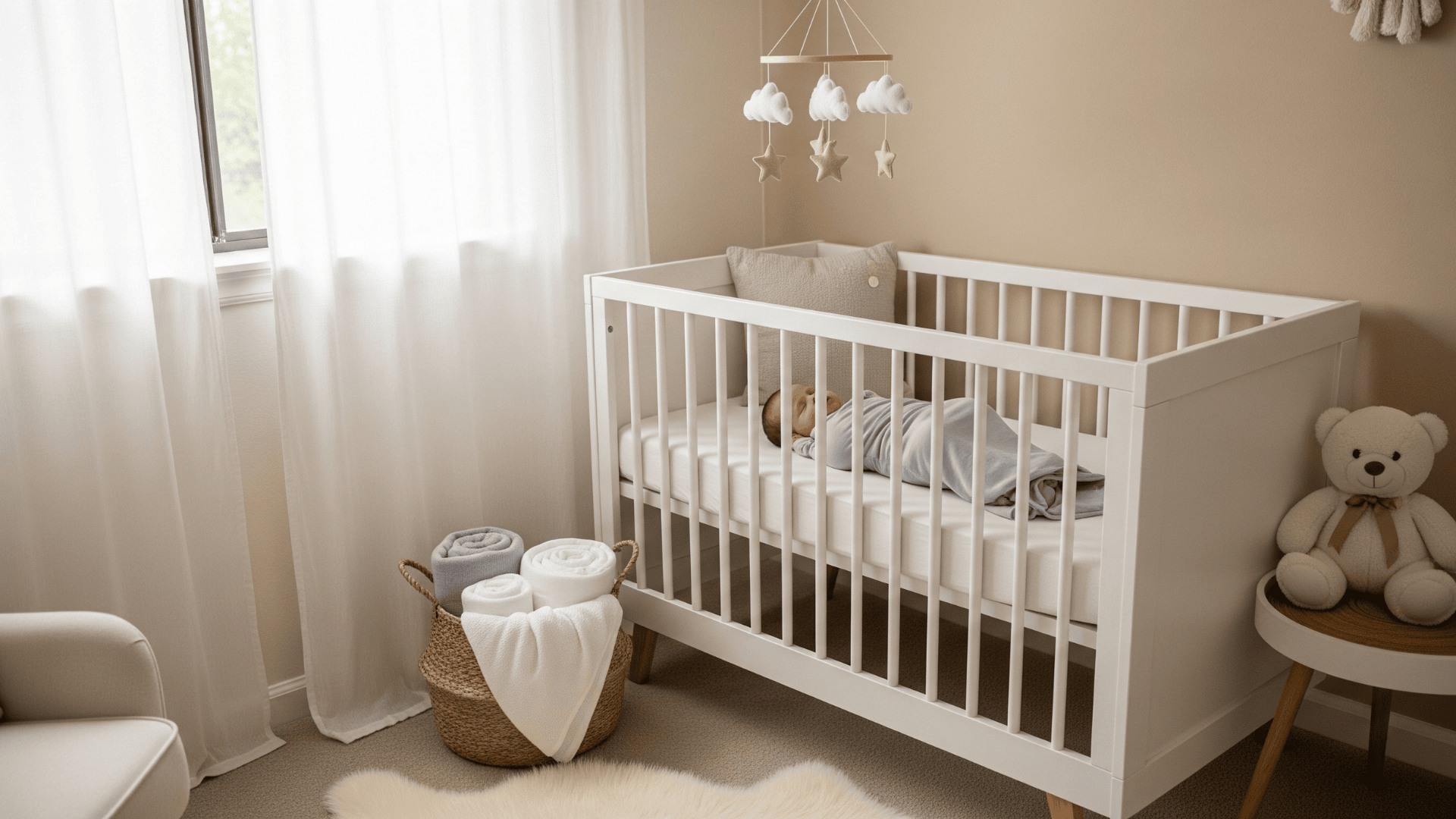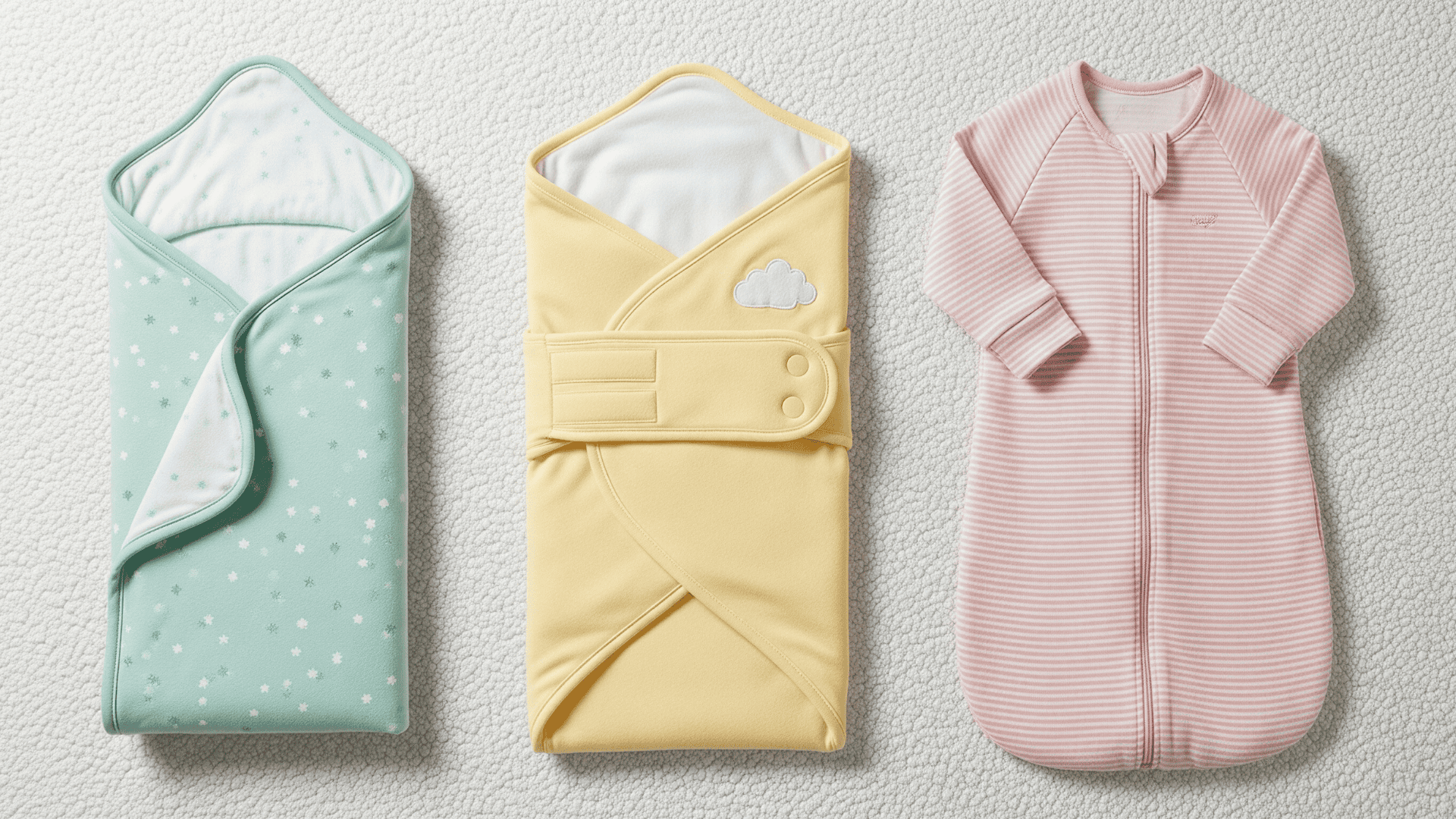Swaddlers Explained: Meaning, Uses, Sizes, Safety, Tips

Swaddling has deep historical roots, with evidence showing parents across cultures have wrapped babies snugly for thousands of years to provide comfort and security.
This ancient practice recognized that newborns benefit from the gentle restriction and warmth that mimics their prenatal environment.
Modern parenting has embraced swaddling through specialized products called swaddlers that make this traditional technique easier and safer for today’s families, often featured alongside other thoughtful baby gifts like creative diaper cake ideas for new parent celebrations.
These specialized blankets and garments help parents provide the comfort and security that swaddling offers while addressing modern safety concerns and busy lifestyles.
What is a Swaddler? Meaning and Definition
Swaddling involves wrapping a baby snugly in a cloth or blanket to provide comfort and security during sleep and rest periods.
The term “swaddler” refers specifically to specialized baby blankets or garments designed for this purpose, featuring materials and construction that make safe swaddling easier for parents to achieve consistently.
Modern swaddlers differ from regular blankets in their size, shape, and often include fastening systems like Velcro, snaps, or zippers.
These products help parents achieve proper swaddling technique without the complexity of traditional blanket folding and tucking methods that can be challenging to master.
The primary goal of swaddling remains creating an environment that mimics the womb’s cozy, secure feeling that babies experience during pregnancy.
Uses and Benefits of Swaddlers
Swaddlers serve multiple important functions that benefit both babies and parents during the challenging early months of parenthood.
These products address common newborn challenges while supporting healthy development and family well-being through improved sleep and reduced stress.
High-quality swaddlers also make thoughtful baby shower gifts since they address a genuine need that new parents will use frequently during those early months.
1. Sleep Improvement
The most significant benefit involves promoting better sleep by reducing the Moro reflex, also known as the startle reflex.
This involuntary response causes babies to suddenly jerk their arms and legs, often waking themselves and disrupting sleep cycles.
Proper swaddling keeps arms gently contained, allowing babies to sleep longer and more peacefully.
2. Soothing and Calming Effects
Swaddlers help soothe fussy or colicky babies by providing consistent, gentle pressure that many infants find calming.
This security can reduce crying episodes and help babies self-regulate their emotions more effectively. The snug feeling often helps overstimulated babies settle down and rest.
3. Temperature Regulation
Quality swaddlers provide warmth without overheating through breathable materials that allow air circulation while maintaining a comfortable body temperature.
This feature supports safe sleep guidelines while ensuring babies stay comfortable throughout sleep periods.
4. Supporting Safe Sleep
Swaddlers encourage safe sleep positions by keeping babies on their backs, which reduces SIDS risk according to pediatric guidelines.
The secure feeling helps babies remain comfortable in the recommended back-sleeping position without rolling over prematurely.
Sizes and Types of Swaddlers

Different swaddler options accommodate various baby sizes, developmental stages, and parent preferences for optimal comfort and effectiveness.
Understanding these variations helps families choose products that work best for their specific needs and circumstances.
- Newborn size (0-10 lbs): Perfect for the first few weeks, provides a snug fit for the smallest babies who need maximum security and warmth.
- 0-3 months (8-13 lbs): Most popular size range, accommodates rapid growth while maintaining proper swaddling benefits through early months.
- Traditional blanket swaddlers: Require manual wrapping techniques but offer flexibility and often cost less than specialized closure options.
- Wrap-style with closures: Feature Velcro, snaps, or zippers for easier application and more secure containment throughout sleep periods.
- Material choices (cotton, muslin, bamboo): Each offers different benefits from durability to breathability, allowing parents to match climate and preferences.
Safety Considerations When Using Swaddlers
Following established safety guidelines helps maximize swaddling benefits while minimizing risks for infant well-being.
| Safety Aspect | Key Guidelines | Warning Signs |
|---|---|---|
| Proper Fit | Snug around chest/arms, loose around hips | Baby seems uncomfortable or restricted |
| Temperature Control | Light clothing underneath, breathable materials | Sweating, flushed cheeks, rapid breathing |
| Sleep Position | Always place on the back, never the side or stomach | Any rolling attempts or increased mobility |
| Developmental Timing | Stop when showing signs of rolling (2-4 months) | Stronger neck control, rolling attempts |
| Breathing Safety | 2-3 fingers space at chest, no loose fabric | Labored breathing or fabric near the face |
Prioritizing safety through proper technique and timing ensures swaddling remains beneficial for both babies and parents.
Practical Tips and Tricks for Using Swaddlers
Successful swaddling requires choosing the right product for your baby’s size and sleep patterns, as some babies prefer arms up while others sleep better with arms down.
For blanket swaddlers, lay the fabric in a diamond shape, fold the top corner down, and wrap snugly across the body while keeping the hips loose.
Gradually transition away from swaddling by leaving one arm out for several nights before completely discontinuing use.
Address common issues like escaping by trying different sizes or styles, and combine swaddling with white noise or gentle rocking for enhanced soothing effects during sleep time.
Conclusion
Swaddlers represent a valuable tool that helps modern parents provide comfort and security for their newborns while supporting healthy sleep patterns and development.
These specialized products make traditional swaddling techniques more accessible and safer for today’s families.
Consulting pediatricians about individual circumstances provides personalized guidance that addresses specific concerns or questions about swaddling practices for each unique situation.
Have you tried swaddling with your baby, or are you considering it for an upcoming arrival? Share your experiences with different swaddler types or ask questions about implementation in the comments below!






